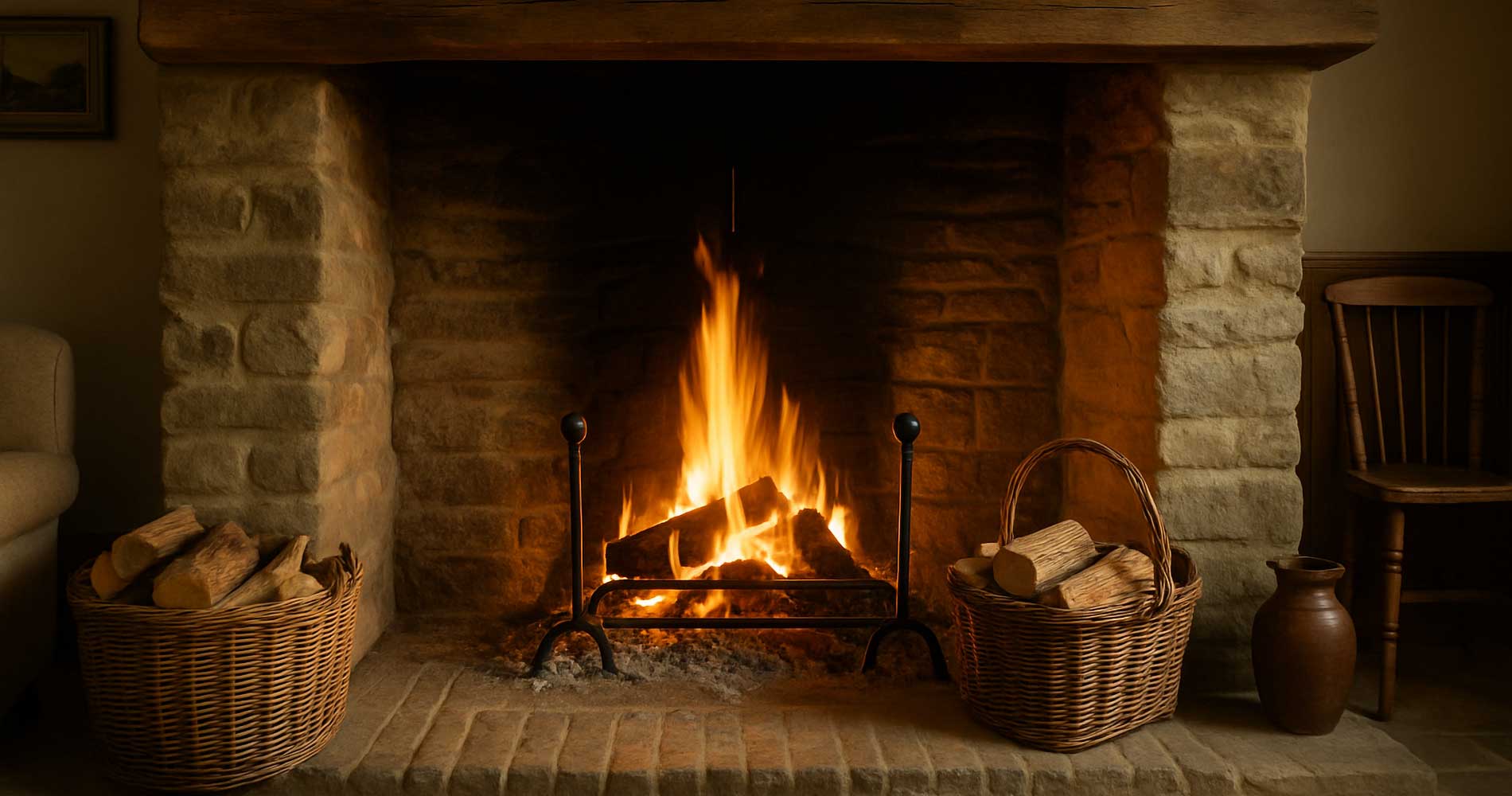Your Chimney Does a Lot More Than You Think
Let’s start here—chimneys don’t get nearly the credit they deserve. Most of the time, they just sit there quietly doing their job. No complaints, no drama. But they’re doing a lot. Drawing smoke out. Keeping the heat flowing safely. Protecting your home from dangerous gases and flying embers. Pretty impressive for something you barely notice most of the year.
The problem is, out of sight can turn into out of mind. And that’s where things get messy—literally and figuratively. So if you’ve got a fireplace, stove, or wood burner, this guide’s for you. It's time to give your chimney a little love.
The Golden Rule: Annual Inspections
First things first: yes, you really do need to have your chimney inspected once a year. Even if you barely use it. Even if everything looks fine from the outside. Because unfortunately, creosote (that sticky, flammable gunk that builds up inside chimneys) and blockages don’t make a lot of noise until there’s smoke coming from places it shouldn't.
- Creosote build-up is a serious fire risk—especially if you burn wood regularly.
- Bird nests and debris can block airflow, sending smoke and gases right back into your home.
- Masonry damage may be hiding behind that clean-looking exterior.
- Carbon monoxide leaks can happen if the flue’s damaged or blocked. And you do not want to mess with that.
Get a certified chimney sweep (yep, they still exist—and no, they don’t sing like in Mary Poppins) to do a full inspection. They'll tell you what needs cleaning, fixing, or replacing. It’s peace of mind. And it might just save your home—or your life.

Cleaning: It's Not Glamorous, But It's Necessary
Chimney cleaning isn’t exactly a dinner party conversation starter. But if you enjoy sitting by the fire, it’s non-negotiable. Over time, soot and creosote coat the inside of the flue. If you let it build up, it turns into a fire hazard. It’s that simple.
Not all chimneys need the same kind of cleaning schedule. Here's what generally determines how often you should have yours cleaned:
- How often you burn: More fires = more soot. Pretty straightforward.
- What you burn: Wood, especially if it’s unseasoned (a.k.a. damp), makes more creosote. Cleaner fuels like gas produce less buildup.
- Your fireplace or stove design: Some units burn more efficiently, which means less mess. Others? Not so much.
If in doubt, get it checked. Better a mild scolding from your chimney sweep than the fire department on your doorstep.
Watch for Warning Signs
Chimneys rarely scream for attention—but they do whisper. You just have to listen. If you notice any of the following, it might be time for a closer look:
- A strong, smoky smell even when you’re not using the fireplace
- Black, tar-like stains around the fireplace opening
- Debris falling into the hearth (bits of brick, soot, etc.)
- Excessive smoke in the room when burning
- Unusual drafts or cold spots around the chimney area
All of these could point to blockages, damage, or build-up that’s interfering with normal airflow. And if airflow's not right, nothing works the way it should.
Maintenance Isn’t Just About the Inside
It's easy to forget that your chimney sticks out of your roof like a periscope. And up there, it’s exposed to rain, snow, wind, curious birds, and the occasional raccoon with bad decision-making skills.
So while interior care is essential, don’t ignore the outside. Here’s what to keep an eye on:
- Cracked bricks or mortar: Water can sneak in, freeze, and expand—making things worse over time.
- Missing chimney cap: This little guy keeps out rain, animals, and debris. No cap = problems.
- Rust on the damper or firebox: That means moisture’s getting in where it shouldn’t.
- Leaning or tilting: That’s a red flag. Call a professional immediately.
Chimneys may look solid, but they’re vulnerable to the elements just like anything else. Regular checkups can catch small issues before they turn into big repair bills.
Gas Fireplaces Still Need Maintenance
If you’ve got a gas fireplace and you’re feeling a bit smug right now—hold on. While gas is cleaner and generally lower-maintenance, it’s not maintenance-free. You still need to have the unit inspected and serviced. Things like valve failures, blocked vents, and pilot light problems can creep up when you least expect them.
And yes, carbon monoxide is still a risk with gas appliances. So don’t skip that annual inspection.
Simple Things You Can Do Yourself
While some chimney tasks are best left to the pros, there are a few things you can handle on your own to keep things running smoothly:
- Check that the damper opens and closes properly before each use
- Burn seasoned hardwood—it produces less creosote
- Clean out ashes regularly, but leave a thin layer to help start the next fire
- Keep the area around your hearth clear of flammable materials
- Install carbon monoxide and smoke detectors nearby, and test them often
These little habits go a long way in keeping your fireplace safe and enjoyable.
The Bottom Line? Respect the Flame
A working chimney is easy to take for granted—until it’s not. And while it might not be the flashiest part of your home, it’s one of the most important when it comes to comfort and safety.
Take care of it, and it’ll take care of you. Crackling logs, quiet evenings, and that unmistakable warmth? Totally worth the effort.
So next time you light a fire, maybe give a little nod of thanks to that chimney above you. It’s doing more than you think.
